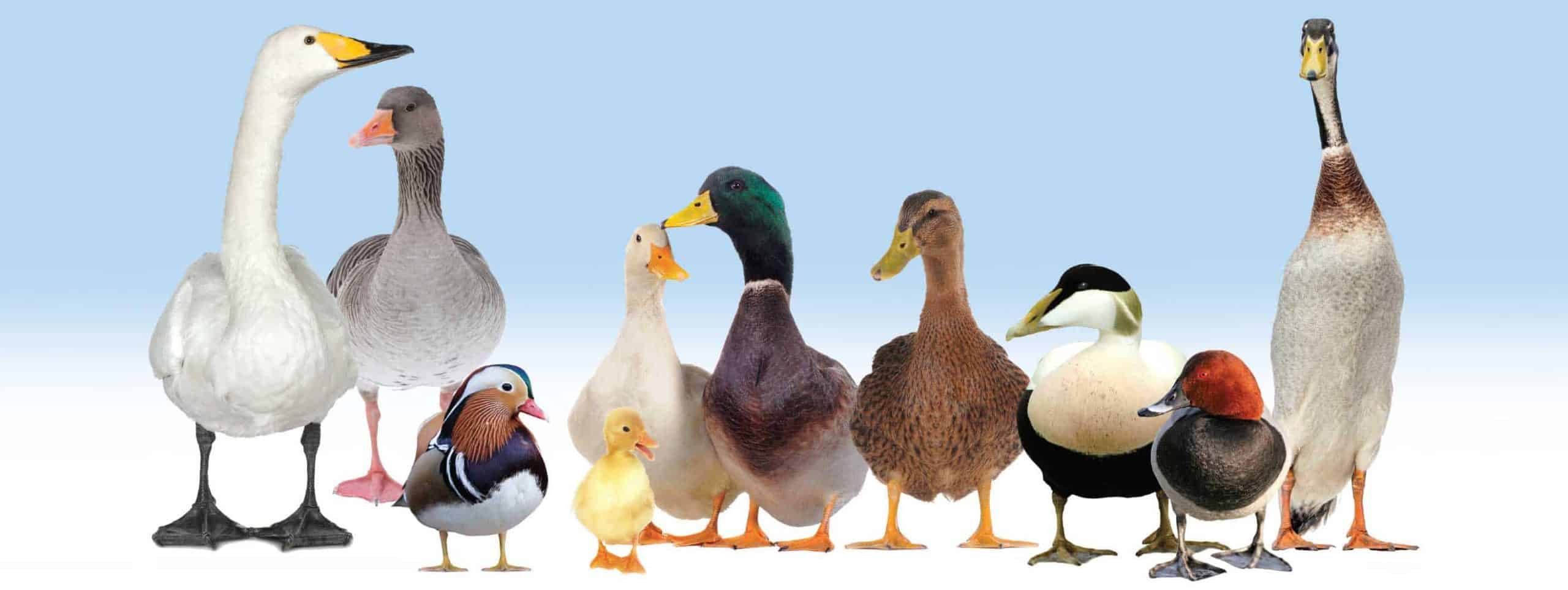Cotton Pygmy Goose
Male Cotton Pygmy Goose — Will Costa Cotton Pygmy Geese — David Tomlinson There are two subspecies of Cotton Pygmy Goose recognised: Indian N. c. coromandelianus of India, Asia extending east to New Guinea Australian N. c. albipennis of north-eastern Australia Male Cotton Pygmy Goose — Jonathan Beilby Cotton Pygmy Goose — Sumit Kumar Sum […]
African Pygmy Goose
African Pygmy Goose pair — Phoebe Vaughan African Pygmy Gosling — Will Costa Nettapus auritus By length, the smallest species of waterfowl in the world, and actually more closely related to most ducks than geese, its bill shape must have led to the name of the African Pygmy Goose. These tiny waterfowl have a huge […]
Blue Duck
Blue Ducks — David Hallett/The Isaac Conservation and Wildlife Trust Blue Ducks are found on both North and South Islands of New Zealand, but both populations are much diminished. Introduced trout compete with them for the same insect food, while introduced stoats are lethal to incubating ducks, with some populations reduced to drakes only. Blue […]
Scaly-sided Merganser
Scaly-sided Merganser displaying— Ian Gereg Scaly-sided Mergansers — Morag Jones Birdguides recently reported that a nest box programme has proven to be an efficient way of increasing the productivity of the Scaly-sided Merganser. A scheme for the species has been running in the Russian Far East since 2000. Read about it here. Mergus squamatus The […]
Common Merganser
Common Merganser female — Pinola Conservancy Three races of Common Merganser are recognised: Eurasian M. m. merganser of northern Europe and northern Asiatic Russia. Asiatic M. m. orientalis of the Central Asian mountains. Slightly larger than the European birds, with a more slender bill. American M. m. americanus of North America. Bill broader-based than in M. m. […]
Common Scoter
Common Scoter — Morag Jones Common Scoter and Black Scoter are best separated by their bill shape: The Common Scoter has a swollen knob at the base of the bill, with yellow patches around the nostril area. The bill of the Black Scoter tends to be flatter and slightly more compact, with much more yellow […]
Egyptian Goose
Egyptian Geese — Stan Maddams The UK Invasive Alien Species (Enforcement and Permitting) Order 2019 came into force on Sunday 1st December. The Order implements requirements contained in EU Regulation 1143/2014 on Invasive Alien Species, which sets out rules to prevent and minimise the impact of the introduction and spread of non-native animals and plants […]
American Wigeon
American Wigeon — Clayton Botkin The American Wigeon shows some variation in its plumage, particularly on the head. Drakes with really pale heads are quite sought after, but all the variations are nevertheless handsome. Some of the local names, such as Baldpate and Pepper-Head, are very descriptive. American Wigeon drake — Morag Jones Vagrants are […]
Chestnut Teal
Chestnut Teal — Joe Street Chestnut Teal female — Morag Jones Anas castanea The handsome little Chestnut Teal is a native of southern Australia, found in both the west and in the east, including Tasmania. Sometimes called Chestnut-breasted Teal, the drake’s appearance is unlike that of any other teal, apart from the rare and endangered […]
African Black Duck
African Black Duck — Ian Gereg African Black Ducks from South Africa have blue-black bills, while those from the north of the species’ extensive range have pink bills. In Ethiopia they can be found breeding at up to 14,000ft. There are two subspecies recognised: A. s. leucostigma – isolated populations in west equatorial Africa, south-east […]


